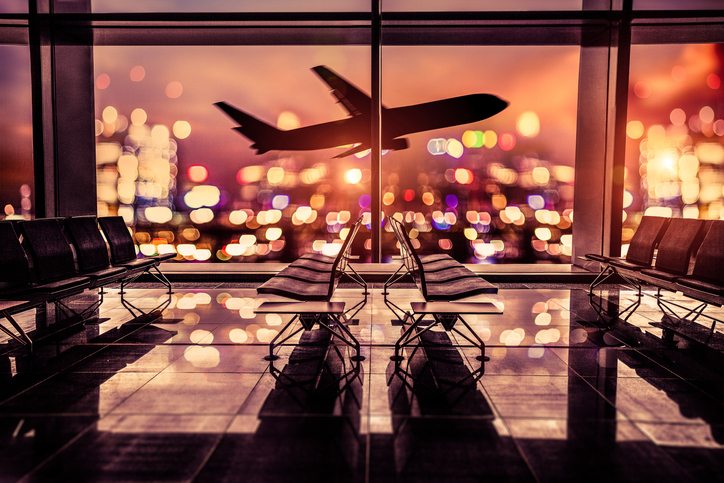Travel broadens the mind, but it also may, of course, pose a risk to your health. It’s important to know how extended plane trips can affect your body and what steps you can take to keep healthy while in the air, for a safe and happy journey.
HAVE A CHECK UP
If you’re concerned about your health while flying, see a doctor before you go. This is crucial for anyone with a pre-existing illness.
Dr Ryan Harvey, from housecalldoctor.com.au, says, “Chronic heart and lung conditions such as ischaemic heart disease or emphysema put passengers at risk of further effects of low oxygen and blood clots. Patients with previous cancer of any type will find themselves at higher risk of blood clots, while passengers with on-going sinus or respiratory issues also become at higher risk of barotrauma (injury caused by air pressure) and hypoxia (oxygen deficiency).”
EARS, SINUSES AND ALTITUDE
The change in air pressure can cause problems with our ears and sinuses, as Dr Harvey explains: “Changing pressure causes the air in the hollow spaces in our body to expand. This can occur rapidly and cause trauma, often called barotrauma, to our sinus and inner ears.”
He says most of these issues can be overcome by equalising the pressure in your ears by “popping” them, done by closing your mouth, pinching your nose and pressing out air, or by chewing or drinking during take off and landing.
ARE YOU LUNG-FIT TO FLY?
Air pressure changes can also cause “spontaneous pneumothorax”, which is where a small injury in the lung causes air to escape into the chest cavity. “The air in the chest cavity then doesn’t allow your lung to fully expand and work properly,” says Dr Harvey. The condition is quite serious and can be fatal if left untreated, highlighting the importance of being cleared for flying if you have any underlying health conditions.

CABIN HUMIDITY
Ear, nose and throat specialist Dr Sam Barbalatt says, “The air in aircraft cabins runs at a humidity level of around 20 per cent and -19 degrees Celsius. The nose doesn’t respond well to prolonged exposure to this sort of cool and drying environment.” This can make it difficult to naturally clear your nose, which adversely affects the immune processes of the nasal tissues.
Dr Barbalatt says that this is one of the main reasons why passengers can pick up a viral infection. “The problem comes on arrival at destinations where contact is made with airport personnel and often in air-conditioned environments in which there’s no viral filtration,” he says.
Keeping nasal passages moist with a preservative-free nasal spray containing red seaweed extract will help.
INFLIGHT FATIGUE
Any traveller will tell you about experiencing fatigue or jet lag after a flight. This is due to the reduced levels of oxygen on board, which are about 25 per cent lower than those found at sea level. Some passengers can experience sleeplessness, headaches and even nausea.
On longer air trips, Dr Harvey says that there’s a small risk of developing fluid on the lungs, or pulmonary oedema.
Virgin Australia cabin crew-member Hanna Murphy often makes the 14-hour trip from Sydney to Los Angeles and says, “I eat well, drink plenty of water and make sure to exercise.”
RISKS OF DEHYDRATION
While climbing across your fellow passengers to go to the toilets might seem annoying, it’s important to keep your fluids up. Reduced air pressure and oxygen levels cause the body to become dehydrated, with a recent study by comparetravelinsurance.com.au showing that we lose 1.5L of water during a three-hour flight.
Murphy advises passengers to regularly drink water, and avoid alcohol and caffeine.
BLOATING AND SWELLING
Air pressure changes cause a build up of gas and fluid in the body, which can lead to bloating, constipation and other gastrointestinal issues. Maintaining fluid intake, while doing in-flight exercises should help with this.
DANGERS OF DEEP VEIN THROMBOSIS
More commonly known as “DVT”, this is a condition where a blood clot forms in a vein deep in the body, causing swelling and pain. The clot can break away and travel through the body, causing a pulmonary embolism, which is a very serious and potentially fatal condition.
The risk of getting DVT is increased by sitting for a long time without moving, such as on flights for eight hours or longer. All airlines have advice on how to prevent DVT with inflight exercises, encouraging us to get up and take a walk or at least do the seated exercises. Dr Harvey says to do the exercises every two hours, or stand up and walk down the aisle if possible.







